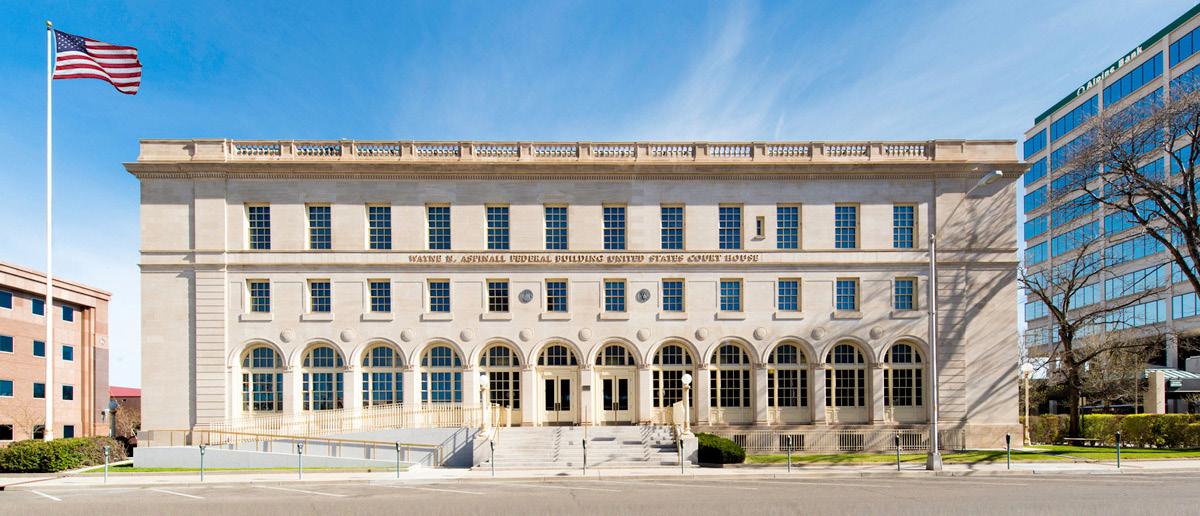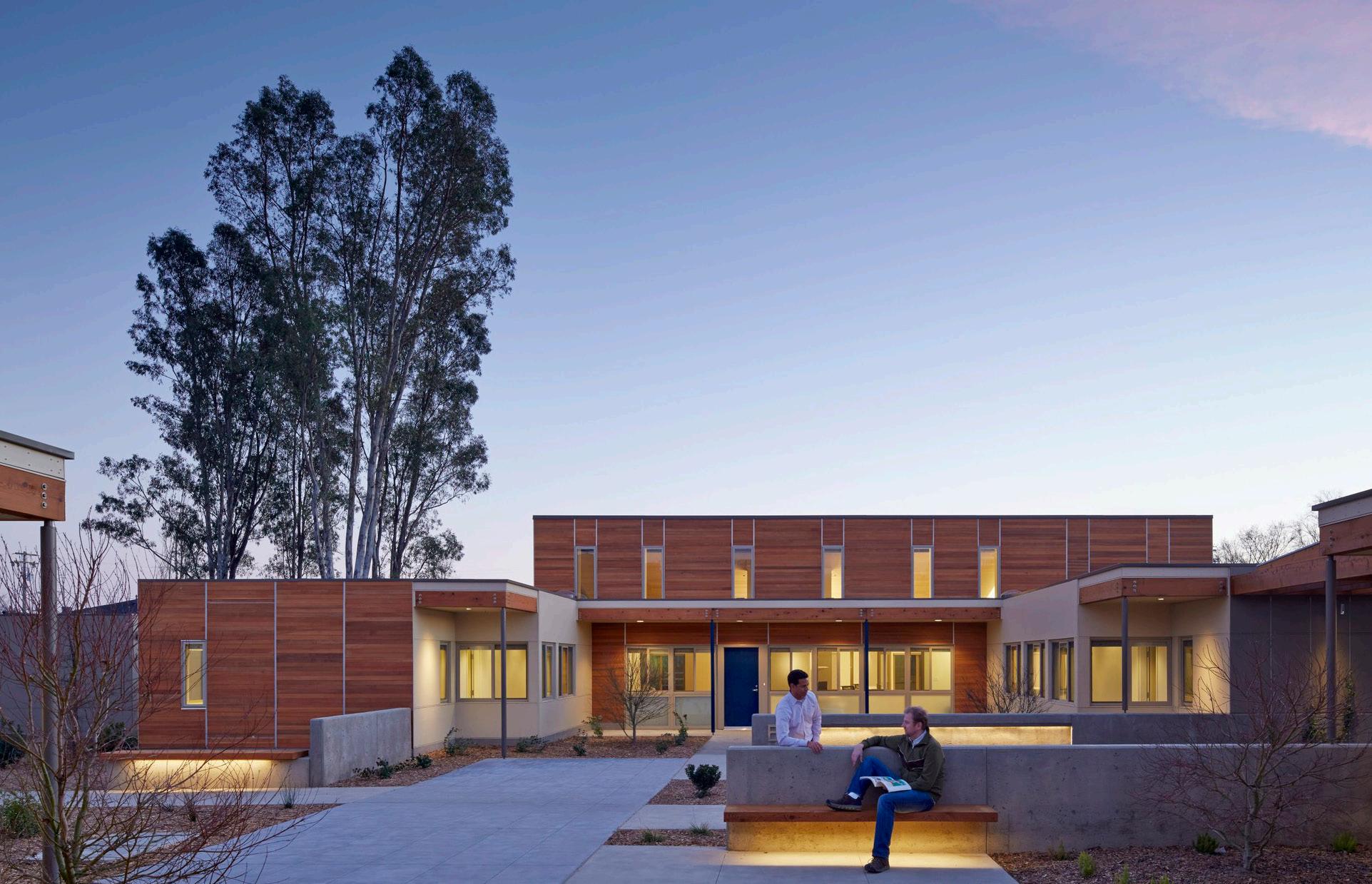
4 minute read
Framework for design excellence, a primer
The AIA’s Framework for Design Excellence supports a clear vision for delivering high performing, equitable, and beautiful buildings. The framework is made up of ten measures that grew from the AIA’s Committee On The Environment (COTE) Top Ten Award, a well-known industry benchmark that has promoted these core values since 1997. It is a resource that can facilitate conversations with clients and communities and set meaningful goals and targets for climate action. As our society faces increasingly complex challenges, from climate change, to social equity, to an emphasis on individual well-being, good architecture provides a primary means to address these issues head on.
To give the framework some context, I’ll outline some of the major milestones over the past few years that led up to its recent adoption. In 2017, the COTE Top Ten Award was overhauled to reflect the current state of cutting-edge practice, with an increased emphasis on the metrics behind the design. In 2018, Corey Squire, Helena Zambrano, and I led the development of the COTE Toolkit, along with over 60 volunteers spanning across the institute that provided deep subject matter expertise in all ten measures. The toolkit served as an ‘operating manual’ that demonstrates how to integrate the measures into projects. Concurrently, the AIA issued strong position statements on climate change, and incorporated Canon VI - Obligations to the Environment into our Code of Ethics. At the A’19 conference, the Resolution for Urgent and Sustained Climate Action was put forth to AIA delegates, volunteer chapter leaders from all over the country. Adopted by a landslide, the architecture community signaled its desire to choose relevance in the era of climate change. In response, the AIA Board of Directors swiftly adopted the COTE Top Ten Award criteria and recast it as the Framework for Design Excellence last September. The framework has been influenced by these and many other initiatives across the institute. Attention must now turn to integrating the ten measures into every practice, every building, and every city.
The framework provides a construct for an open-ended dialogue that facilitates a more deeply integrated and rich design solution. It asks the essential questions that set the project up for success at its earliest stages. It leads the project with a vision instead of a checklist, mandating design teams address nuanced concepts of culture and place. It is accessible to a lay audience, in a language that which they can understand and contribute. These questions not only illuminate opportunities to integrate sustainability, but to further a deeper understanding of our clients, future building inhabitants and communities in which they reside.
The framework is an extremely powerful design tool that works in a myriad of ways. It provides flexible guidance without overly prescriptive solutions. Each measure unpacks best practices, project examples, tools, and influential research. It is curated to highlight essential criteria, promote searchability and ease of use. Rather than another detailed report focused on an isolated measure that must work in all conditions, the team developed a holistic resource that summarizes the landscape of best practices to encourage deeper adoption in everyday practice. It removes the barriers to high performance and high design by focusing on proven low cost, high impact strategies. that work most of the time.

Sweetwater Spectrum Community By Leddy Maytum Stacy Architects, a 2015 COTE® Top Ten Recipient.
(Image Credit: Tim Griffith)
2020 is a big year. We celebrate the 50th anniversary of Earth Day and the 30th anniversary of COTE. We’re also ratcheting up the 2030 Commitment goals to an 80 percent savings target, and challenging firms to join up. I am proud that in the first few months of this year, signatories have increased by ten percent, and the program has set aggressive goals of doubling in size and significantly increasing reporting year over year. Another inspiring development is the explicit inclusion of the framework as an integral part of the AIA’s honor awards. Many AIA chapters have also adopted the framework into their local architecture awards programs. I am deeply inspired by all of the hard work that is’s being done across the institute to elevate the framework and its vision, and look forward to supporting it however I can.

E+ // 226-232 Highland Street Townhouses, a 2015 COTE® Top Ten Recipient.
(Image Credit: Urbanica)
Author bio:
Tate Walker AIA, LEED Fellow is the Director of Sustainability at OPN Architects. He co-led the development of the COTE Toolkit in 2018 and is co-chair of the AIA’s 2030 Commitment.
Framework for Design Excellence
Design for Integration: What’s the big idea? How does the project demonstrate the intersection of design excellence and sustainable performance?
Design for Community: How does this project promote equity, make the most of its surrounding community, integrate with it, and give back?
Design for Ecology. How does this project respond, connect, and contribute to the surrounding ecosystem?
Design for Water: How does the project use water wisely and handle rainfall responsibly?
Design for Economy: How does the design show that higher performance can be cost-effective?
Design for Energy: How much energy does the project use, is any of that energy generated on-site from renewable sources, and what’s the net carbon impact?
Design for Wellness: How does the design promote the comfort and health of those who spend time in it?
Design for Resources: How were the decisions about the materials used based on carbon impact?
Design for Change: How does the project design anticipate adapting to new uses and to climate change?
Design for Discovery: What lessons for better design have been learned through design and occupancy?






